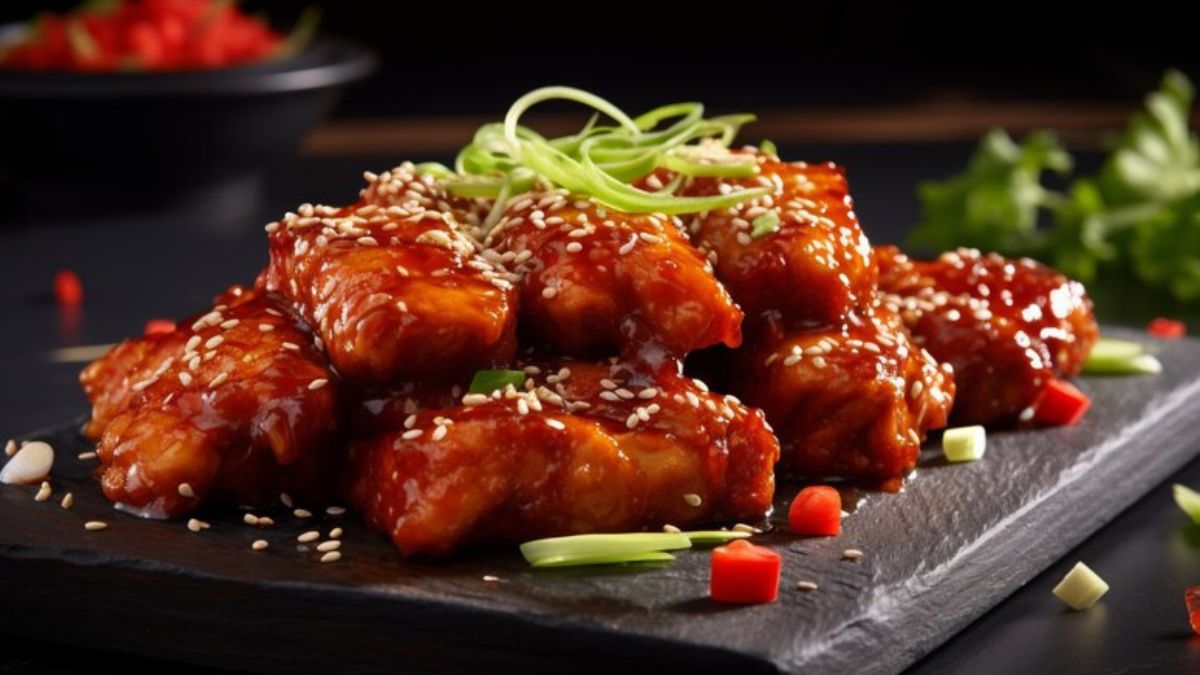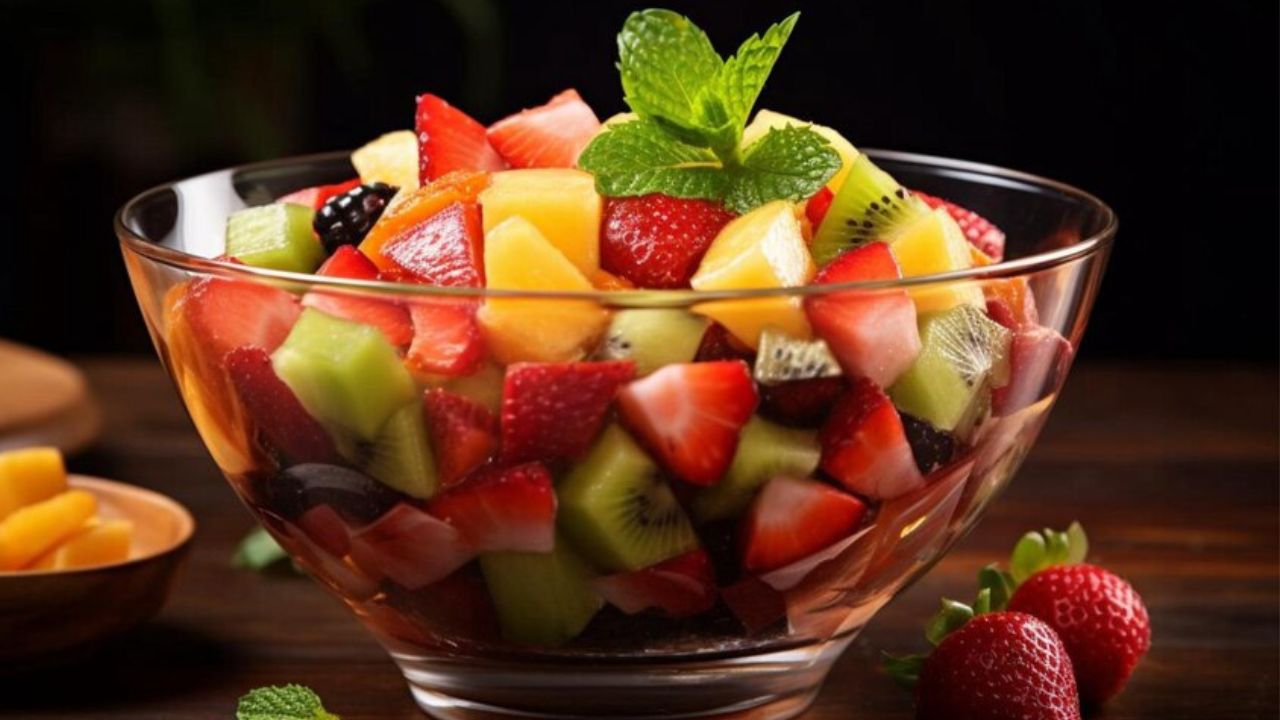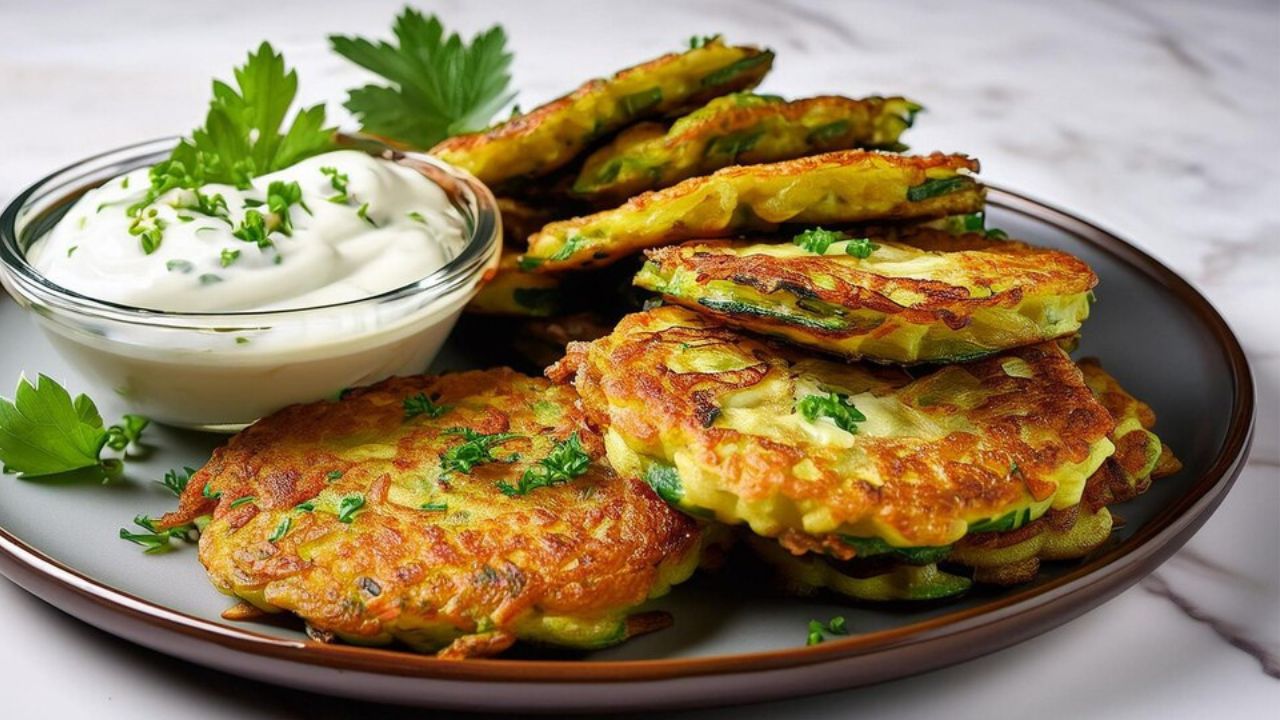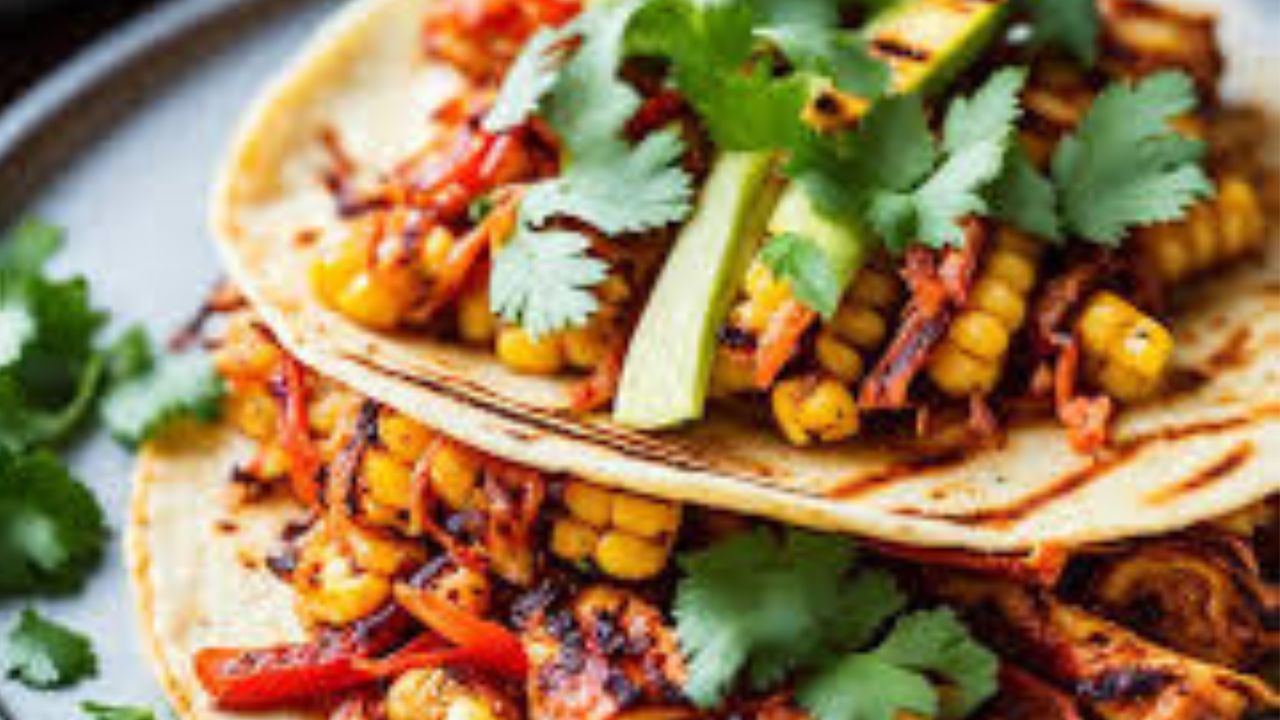Food
Chicken Negimaki: A Delectable Japanese Delight

Chicken Negimaki is a mouthwatering Japanese treat that combines the tastes of succulent chicken with crisp green onions, all rolled up and coated in a decadent teriyaki sauce. This delicacy, which originated in Japan, has captured the hearts of foodies everywhere with its distinct flavor and eye-catching presentation. How can you prepare Chicken Negimaki at home and what makes it so special? Enter the world of Chicken Negimaki with me.
Ingredients Needed for Chicken Negimaki
Getting the appropriate components together is the first step in making chicken negimaki. What you’ll need is as follows:
Core Ingredients:
- Boneless, skinless chicken breasts or thighs
- Scallions (green onions)
- Soy sauce
- Sake or dry white wine
- Mirin (sweet rice wine)
- Sugar
- Sesame oil
Optional Ingredients:
- Ginger
- Garlic
- Toasted sesame seeds
- Green bell peppers
Ingredient Sourcing Tips: Get fresh, organic chicken and scallions for optimal results. Select premium mirin and soy sauce, as they have a big taste effect.
Preparing Chicken for Negimaki
The way the chicken is prepared is key to making the ultimate Chicken Negimaki.
Choosing the Right Chicken Cuts: Choose skinless, boneless chicken thighs or breasts. Although breasts provide a slimmer choice, thighs are more forgiving and juicy.
Preparing the Chicken: Cutting and Softening Cut the chicken into uniformly thin slices. Gently pound each piece to a uniform thickness by placing it between pieces of plastic wrap. This guarantees simple rolling and even frying.
The Role of Scallions in Negimaki
Not merely a component, but the essence of negimaki are the scallions.
Why Scallions are Essential: The delicate, fresh onion flavor that scallions bring to the chicken is a wonderful match. Their vivid green hue further enhances the aesthetic appeal.
Preparing Scallions: Cut them into lengths that correspond to the breadth of your chicken pieces after trimming the ends. Their pliability and ease of rolling can be increased by quickly blanching them in boiling water.
Marinating the Chicken
The secret to giving the chicken a rich, deep taste is to marinate it.
Essential Marinade Ingredients:
- Soy sauce
- Sake or dry white wine
- Mirin
- Sugar
- Sesame oil
Step-by-Step Marinating Process:
- In a bowl, mix together the marinade ingredients.
2. Transfer the chicken slices to a shallow plate or resealable bag.
3. Cover the chicken with the marinade, making sure to coat every piece completely.
4. For a more powerful flavor, seal and chill for at least 30 minutes, or up to overnight.
Tips for the Perfect Marinade: Change the sweetness by adjusting the amount of sugar. Grated garlic or ginger can improve the flavor profile.
Rolling the Negimaki
Although it takes some skill to roll negimaki, it becomes easy with practice.
Techniques for Rolling: Place a few scallion pieces at one end of a flattened chicken slice, then roll firmly.
Ensuring a Tight Roll: To guarantee the chicken maintains its shape while cooking, roll it securely.
Securing the Roll: To keep the rolls in place, use kitchen twine or toothpicks. By doing this, they won’t unravel while cooking.
Cooking Methods for Chicken Negimaki
Chicken negimaki can be prepared in a variety of ways, each of which adds a distinct flavor.
Grilling: Cook the rolls on medium heat, flipping them from time to time, until the chicken is cooked through and nicely browned.
Pan-Frying: Pan-fry the rolls in a bit of oil over medium heat, turning to cook all sides until golden brown and cooked through.
Broiling: Once the chicken is done and beginning to brown, place the rolls on a baking sheet and broil, flipping the chicken from time to time.
Making the Perfect Teriyaki Sauce
The final element that ties everything together is teriyaki sauce.
Essential Sauce Ingredients:
- Soy sauce
• Dry white wine or sake
• Sugar; Mirin
Cooking the Sauce: In a saucepan, combine all the ingredients over medium heat. Cook until the sauce gradually thickens and the sugar melts.
Adjusting the Sauce to Taste: If necessary, add extra sugar or soy sauce after tasting to modify the sweetness or saltiness.
Cooking Chicken Negimaki: Step-by-Step Guide
Here’s how to make chicken negimaki step-by-step:
Pre-Cooking Preparations:
- Set the broiler, pan, or grill to preheat.
• Take the chicken out of the marinade and let any extra fall off.
Cooking the Chicken Rolls:
- Using your favorite cooking technique (grill, pan-fry, or broil), cook the rolls until the chicken is thoroughly cooked through and no longer pink inside.
2. To glaze the rolls, brush them with teriyaki sauce in the last few minutes of cooking.
Finishing Touches: After taking out the twine or toothpicks, cut the rolls into little pieces. If desired, sprinkle sesame seeds on top.
Serving Suggestions for Chicken Negimaki
Presentation is as important as taste.
Presentation Tips: Spread some teriyaki sauce on a plate and arrange the cut buns. Add sesame seeds and finely sliced scallions as garnish.
Accompaniments and Sides: For a full dinner, serve with steamed rice, miso soup, or a side salad.
Variations of Chicken Negimaki
Though traditional chicken negimaki is delicious, you can get creative with it.
Traditional vs. Modern Variations: Modern negimaki incorporates extra veggies or alternative meats, but traditional negimaki solely utilizes chicken and scallions.
Using Different Fillings: Try fillings like bell peppers, asparagus, or carrots for a vibrant variation.
Vegetarian and Vegan Alternatives: For a plant-based variation, swap out the chicken with seitan or tofu and marinate it in a vegan marinade.
Nutritional Benefits of Chicken Negimaki
In addition to being tasty, chicken negimaki is also nutrient-dense.
Health Benefits of Chicken: Lean protein sources like chicken are vital for building and repairing muscle.
Nutritional Value of Scallions and Other Ingredients: Scallions are high in vitamins A and C, and the soy sauce in the teriyaki sauce gives it antioxidants.
Cultural Significance of Negimaki in Japan
A specific position in Japanese cuisine is reserved for negimaki.
Negimaki in Japanese Cuisine: It’s a well-liked dish at Japanese eateries, frequently consumed on festive days and holidays.
Celebrations and Traditions Involving Negimaki: Negimaki is occasionally served at celebratory meals and family get-togethers, underscoring the value of shared dining experiences.
Tips for Perfecting Chicken Negimaki
A few crucial pointers are needed to achieve perfection.
Common Mistakes to Avoid: To prevent the chicken from becoming dry, don’t overcook it. Make sure the tastes in the marinade are balanced to avoid being too sweet or salty.
Chef’s Tips and Tricks: To ensure food safety, always marinate in the refrigerator and slice chicken with a sharp knife.
Conclusion
A delicious dish that captures the spirit of Japanese cooking on your plate is chicken negimaki. This meal is sure to impress with its savory-sweet teriyaki sauce, delicate chicken, and fresh scallions. Why not attempt it at home then? You’re well on your way to preparing a restaurant-caliber meal in your own kitchen using the above-mentioned procedures and advice.
FAQs
Can I use other meats for negimaki?
Yes, you can substitute pork or beef for the chicken. Just make sure the meat is tenderized and sliced thinly.
How long can I marinate the chicken?
The finest taste will come from marinating the chicken overnight, but you can marinate it for at least 30 minutes.
Can I make negimaki ahead of time?
Indeed, you may make the chicken negimaki and roll it ahead of time. For the finest flavor, cook right before serving.
What are some good side dishes for negimaki?
Chicken negimaki goes well with steamed rice, miso soup, and a side salad.
Is chicken negimaki gluten-free?
By using gluten-free soy sauce and making sure additional components like mirin and sake are also gluten-free, it may be made gluten-free.
Food
Penang Rojak: A Burst of Flavors in Every Bite

Penang Rojak is known for its stunning scenery, vibrant culture, and delicious cuisine, to name a few of its main draws. Rojak is one of Penang’s many colorful culinary creations that best embodies the island’s distinct fusion of flavors and cultures.
What Is Penang Rojak?
Local fruit and vegetable dish called penang rojak is covered in a thick, sticky sauce that has a hint of sweetness and savory flavor. This dish, in contrast to most salads in the West, is full of strong tastes that dance over your palette. The Malay name for “rojak” literally means “mixture,” signifying the blend of flavors and textures that make it so delicious.
The Ingredients That
The unique combination of flavors in Penang rojak is what makes it so beautiful. Fresh fruits that add a cool crunch, such pineapples, guavas, cucumbers, and jicama (called sengkuang in the area) are usually included. Tofu puffs, cuttlefish, and occasionally crispy you tiao (Chinese fried dough sticks) are paired with the fruits. Together, these disparate components produce a texture that is indelible.
But it is the sauce that really makes it great. Tamarind juice, sugar, chile, and shrimp paste (belacan) combine to create a complex dressing. To add even more richness and nuttiness, this sauce is then combined with crushed peanuts and sesame seeds.
The Perfect Balance of Flavors
The seamless balancing of various flavors is one of the reasons Penang rojak is so popular. A complex flavor is produced by the combination of the sweetness of the fruits, the mild bitterness of the you tiao, and the pungency of the shrimp paste. The peanuts provide a tasty crunch, and the flavors of the tamarind and chile give it a pleasant kick.
it is a reflection of the island’s multiculturalism in many ways. Similar to the varied components of the meal, Penang is a cultural melting pot with influences from Malay, Chinese, and Indian cuisines coexisting together.
A Must-Try Street Food in Penang
It is imperative that you sample a plate of rojak from a street vendor while in Penang. Locals prepare the dish in front of you at roadside kiosks, where you can frequently find the tastiest rojak. People are frequently seen patiently waiting in lines to satisfy their craving for rojak, and with good cause. There are subtle differences between each vendor’s version of the recipe, thus no two rojak experiences are the same.
Conclusion
It is an island’s unique culinary traditions showcased in a flavor explosion that goes beyond a simple fruit salad. Its unique blend of savory, sweet, sour, and spicy flavors makes it a memorable dish. Regardless of your location, a single taste of this well-known street cuisine will entice you to return for more.
FAQs
What is Penang rojak made of?
Fresh fruit such as pineapple, cucumber, and guava are usually combined with fried dough sticks, cuttlefish, and tofu puffs in a sauce made of shrimp paste that is both sweet and salty. This is called penang rojak.
Is Penang rojak spicy?
Because of the chili in the sauce, it can be rather spicy, though how hot it is will depend on the vendor and preparation methods.
Where can I try Penang rojak?
Freshly made Penang rojak is available at street stalls and local food markets all across Penang.
Is Penang rojak vegetarian?
The fruit and veggies are vegetarian, but unless it is changed, the sauce—which usually contains shrimp paste—is not suited for severe vegetarians.
What makes Penang rojak unique?
It is an unusual and delectable cuisine that combines a range of textures with flavors that are sweet, savory, sour, and spicy.
Food
Zucchini Fritters: A Tasty and Healthy Delight

Zucchini fritters are the ultimate in easy, tasty, and healthful snacking. Not only are these crunchy tiny treats simple to prepare, but they are also nutrient-dense, making them a guilt-free treat. Zucchini fritters are a great option for a light main course, a side dish for your meal, or even just a munchie snack. Let us get started on preparing these delicious fritters in your own kitchen.
Why Zucchini Fritters?
During the summer months when zucchini is in season, fritters are a great way to use up an abundance of this produce. They are adaptable, letting you add your preferred herbs and spices, and they may accommodate different dietary requirements. Additionally, especially for finicky eaters, they are a great way to sneak some greens into your diet.
Ingredients You’ll Need
To whip up a batch of zucchini fritters, you’ll need the following ingredients:
- 2 medium-sized zucchinis: Grated
- 1/2 cup of flour: All-purpose or whole wheat
- 1/4 cup of grated Parmesan cheese: Optional, but adds a lovely flavor
- 1 egg: Lightly beaten
- 2 cloves of garlic: Minced
- Salt and pepper: To taste
- 1/4 teaspoon of baking powder: For a little lift
- Olive oil: For frying
Step-by-Step Instructions
Prepare the Zucchini
Using a food processor or a box grater, grate the zucchini first. After grating the zucchini, transfer it to a colander and season with salt. Give it ten minutes or so to settle. This is an important step since it helps remove the zucchini’s extra moisture.
Squeeze Out the Excess Water
Once the zucchini has cooled down, press out as much water as you can with a fresh kitchen towel or cheesecloth. Your fritters will be crispier if the zucchini is drier.
Mix the Ingredients
Grated zucchini, flour, egg, Parmesan cheese (if used), minced garlic, baking powder, salt, and pepper should all be combined in a big basin. Stir everything until thoroughly mixed. Not very dry, but thick enough to maintain its shape when scooped is the goal.
Heat the Oil
In a large skillet, heat a couple tablespoons of olive oil over medium heat. The ideal amount of oil to use is just enough to coat the pan’s bottom without completely submerging the fritters.
Fry the Fritters
Transfer around two tablespoons of the zucchini mixture into the heated oil using a spoon. Flatten the fritter slightly with a spatula or the back of a spoon. Fry every fritter until golden brown and crispy, about 3–4 minutes on each side.
Drain and Serve
After cooking, take the fritters out of the skillet and put them on a platter covered with paper towels to absorb any remaining oil. While they are still heated and crispy, serve right away.
Serving Suggestions
When it comes to serving, zucchini fritters are very adaptable. They can be eaten as a snack by themselves or combined with a dipping sauce such as spicy aioli, tzatziki, or sour cream. They are also excellent as an accompaniment to grilled fish or meats. Serve a fresh salad on the side with the fritters for a light supper.
Tips for the Perfect Zucchini Fritters
Don’t skip the draining step: Because zucchini retain a lot of water, your fritters could get mushy if you do not remove as much as you can.
Experiment with flavors: For an additional flavor boost, add chopped herbs to the mixture, such as basil, parsley, or dill. A good kick can also be added with a pinch of red pepper flakes.
Make them gluten-free: To make this recipe gluten-free, simply replace the all-purpose flour with almond flour or gluten-free flour.
Conclusion
A tasty and healthful way to eat this versatile vegetable is as zucchini fritters. These fritters will satisfy your cravings for a quick snack, a side dish, or even a vegetarian main entrée. Zucchini fritters are incredibly versatile and simple to prepare, making them an essential dish for any home chef.
FAQs
Can I bake zucchini fritters instead of frying them?
Yes, if you want a healthier option, you can bake them at 400°F (200°C) for around 20 minutes, flipping them midway through.
How do I store leftover zucchini fritters?
For up to three days, keep them refrigerated in an airtight container. To maintain their crunch, reheat them in an oven or skillet.
Can I freeze zucchini fritters?
Fritters made with zucchini do freeze well. After freezing them in a single layer on a baking sheet, move them to a freezer bag. Straight from the freezer, reheat in the oven.
What can I use instead of Parmesan cheese?
Any hard cheese, such as cheddar, or even nutritional yeast can be used in place of Parmesan if you are trying to avoid dairy.
How can I make my fritters extra crispy?
Squeeze off as much water as you can from the zucchini and fried it in enough oil in a hot skillet to make it extremely crispy.
Food
A Kimchi Fusion: Blending Tradition with Modern Flavors

Fermented cabbage is not all that kimchi, the popular side dish from Korea, is made of. With a centuries-old history, it is an icon of Korean culture and food. These days, kimchi has evolved beyond its traditional origins, influencing a flurry of fusion dishes that combine its zesty, strong flavors with international cuisines. This article delves into the delectable realm of kimchi fusion, where culinary innovation blends with traditional flavors.
The Heart of Kimchi: A Brief History
The Origins of Kimchi
The origins of kimchi may be traced back over 2,000 years, when it was created as a way to preserve vegetables during the hard Korean winters. It developed into a mainstay of the Korean cuisine over time, with hundreds of varieties based on location, time of year, and individual preferences.
The Flavors of Kimchi
A harmonious blend of spicy, sour, salty, and somewhat sweet flavors characterizes kimchi at its heart. In addition to preserving the veggies, the fermentation process gives kimchi its distinct flavor, which has led to its worldwide popularity.
The Rise of Kimchi Fusion
The Global Appeal of Kimchi
Kimchi has been more well-known all over the world in recent years, not only as a side dish but also as a flexible component that can improve a range of meals. It is a popular among chefs and home cooks alike because of its strong flavors and health advantages, especially its probiotic qualities.
Fusion Cuisine: Where East Meets West
Fusion cooking is all about being creative and fusing ingredients from many cooking styles to produce something fresh and interesting. For these kinds of culinary experimentation, kimchi is the ideal component because of its strong flavor profile.
Exploring Kimchi Fusion Dishes
Kimchi Tacos: A Mexican-Korean Delight
The kimchi taco is one of the most well-liked kimchi fusion recipes. The colorful aromas of Mexican cuisine are combined with the robust flavors of kimchi in this meal. With each bite delivering a rush of taste that combines the best of both cultures, picture a soft corn tortilla filled with succulent, seasoned beef or pork and topped with a tangy kimchi slaw and a drizzle of spicy mayo.
Kimchi Grilled Cheese: Comfort Food with a Kick
The perfect comfort dish is grilled cheese, and kimchi adds a delicious touch. The combination of the sharp, spicy flavors of kimchi and the smoothness of melted cheese results in a gooey, crunchy sandwich that is bursting with umami delight.
Kimchi Pizza: An Unconventional but Tasty Combo
Pizza enthusiasts are constantly seeking for novel toppings, and kimchi makes an unexpectedly excellent combination. Pie is well-balanced and tasty thanks to the acidity and spice of the kimchi, which counterbalances the richness of cheese. For an additional flavorful layer, sprinkle some sesame seeds and scallions on top.
Kimchi Fried Rice: A Fusion Classic
A popular dish that demonstrates how well kimchi melds into different cuisines is kimchi fried rice. You can make a dish that is spicy, tangy, and tasty by adding kimchi to fried rice. You have a sophisticated and comfortable dish when you top it with a fried egg.
Creating Your Own Kimchi Fusion
Experimenting with Flavors
The key to kimchi fusion is to play around with it. Do not be scared to experiment with different cuisines’ ingredients to find what works. The options are unlimited when it comes to incorporating kimchi into foods like smoothies, burgers, and pasta dishes.
Tips for Balancing Flavors
It is crucial to counterbalance the intense flavors of kimchi with other components when working with it. If your dish is already spicy, for instance, you might want to use a kimchi that is softer or add something creamy to balance it out. Similarly, the acidity of the kimchi can help cut through the heaviness of a rich dish.
Sourcing Quality Kimchi
It matters how good your kimchi is. Although kimchi from the store is convenient, you may adjust the fermenting period and amount of spice by creating your own. Furthermore, homemade kimchi frequently tastes fresher and more colorful.
Conclusion
The best of both worlds is represented by kimchi fusion, which embraces innovation while respecting history. You may make dinners that are both familiar and novel, cozy and daring, by adding kimchi to a range of recipes. The realm of kimchi fusion offers countless opportunities for culinary experimentation, regardless of your level of experience in the kitchen or your level of curiosity.
FAQs
What is kimchi fusion?
Kimchi fusion is the process of adding kimchi to recipes from many culinary traditions in order to produce novel and inventive flavors.
Can I use store-bought kimchi for fusion dishes?
Although store-bought kimchi is functional, making your own kimchi can result in more customized and fresh flavors.
What are some easy kimchi fusion recipes to try at home?
Try making kimchi fried rice, kimchi grilled cheese, or kimchi tacos as a fantastic way to get creative with kimchi fusion recipes.
Is kimchi healthy?
Indeed, kimchi is a nutritious complement to a variety of recipes because it is high in probiotics, vitamins, and minerals.
How can I balance the strong flavor of kimchi in fusion dishes?
Use kimchi sparingly to complement rather than overshadow a dish, or counterbalance its strong flavors with creamy or mild elements.
-

 Celebrity10 months ago
Celebrity10 months agoJulia Rejean Moorhead: A Trailblazer in Her Field
-

 INFORMATION11 months ago
INFORMATION11 months agoUnderstanding Information: Its Role and Impact in Our Lives
-

 News10 months ago
News10 months agoThe Ever-Evolving World of News:Global Events Unfolding Today
-

 Sports10 months ago
Sports10 months agoGonzaga Basketball: The Rise of a College Hoops Powerhouse
-

 Business10 months ago
Business10 months agoRogue Trader Rotate Grand Strategist:The Dynamic World of Trading
-

 Sports10 months ago
Sports10 months agoThe Incredible Benefits of Sports: Boost Your Life on All Fronts
-

 Health11 months ago
Health11 months agoThe Ultimate Guide to Health: Tips and Strategies for a Healthier
-

 Technology8 months ago
Technology8 months agoFascinating Facts About Astronauts:The Ultimate Guide
